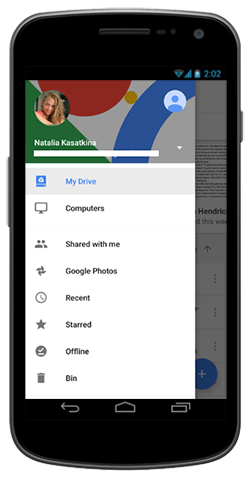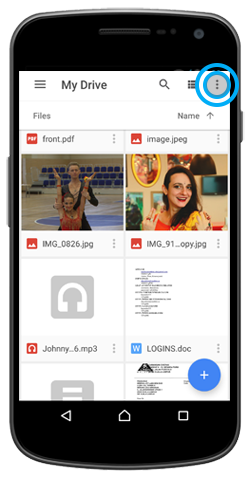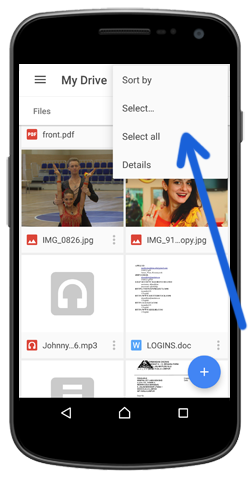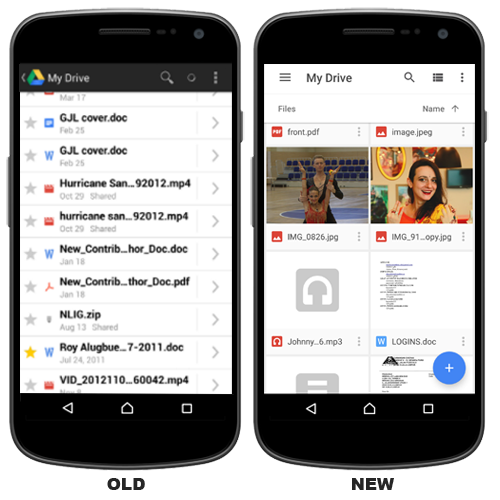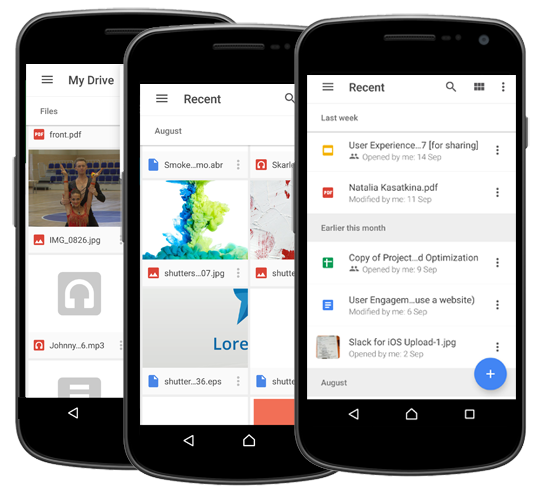“We have a normal UX. Ux? Not before us, we have deadlines here! ”Removing the mantle is my interpretation

The push to writing an article. Let's melt the ice
August 2017. And here again, out of the window, this endless, seemingly insurmountable and dangerous, but at the same time mysterious and exciting, desert of Australia can be seen.
I want to note that my flight passes not through one, but through several deserts of Australia, as well as through Alice Springs - the center of the region Central Australia, which is almost equally removed from the cities of Adelaide in the south and Darwin in the north. In general, the land of Australia fascinates me, and probably, I could still tell you a lot of things, but this topic is a completely different article.
Let us temporarily reject my nostalgia for travel and adventure, well, let's get closer to the point ....
This time I am on my way to Sydney.
')
The reason for the trip - UX Australia - an annual conference dedicated to research and design / creating the most comfortable, “smooth” experience of user interaction with anything you encounter day after day in your daily life: with the website interface, with the application or a program on a personal computer, with a gadget or physical space, it can be an airplane cabin, a medical office, a train station, even the ergonomics of your computer mouse are directly the area of this study.
We will meet with worthy examples, complementing the above, they are waiting for you in the continuation of this article.
In the meantime, I will introduce myself and tell a little about myself.
For 3 years I have been living and working in the international company Mindvalley, which is based in the capital of Malaysia, Kuala Lumpur, has a branch in Estonia, Tallinn, but is registered in America, Nevada. My professional field of study is UX / UI .
I’m in the position of Senior UX / UI Designer and Front-end Developer.
Australia is an expensive treat! But still, I was lucky to get on such a serious and interesting event, of course, before that, I carefully planned and calculated everything.
And I will tell you a little secret that even though I was flying from Malaysia, the budget was not a small one.
And for those to whom it is interesting and who are also, like me, open to such events, I will even give a small calculation below.
In fact, I believe that this is how we grow professionally, through the exchange of experience, technology and skills with like-minded people from around the world.
So I met at the conference with a lot of experts in the field of UX / UI from all over the world. They include a manager and a couple of designers from the Sydney UX research department in Google, content managers and specialists from the Instagram and Facebook team, XD strategist / usability writer / honored speaker from Dallas, USA, CX / UX Melbourne specialist (I really liked her conference on working on improving the UX environment, streets, train station and subway), UX specialist in visualization of data and statistics from Kansas, USA, and many many more other talented specialists.
In the next image, I noted only 20% of those that were voiced at the 4-day conference, to give some idea of what was discussed at such a serious event in a more detailed format.
Lectures were held in several rooms and wanted to have time to visit everything! Only flew from one audience to another.
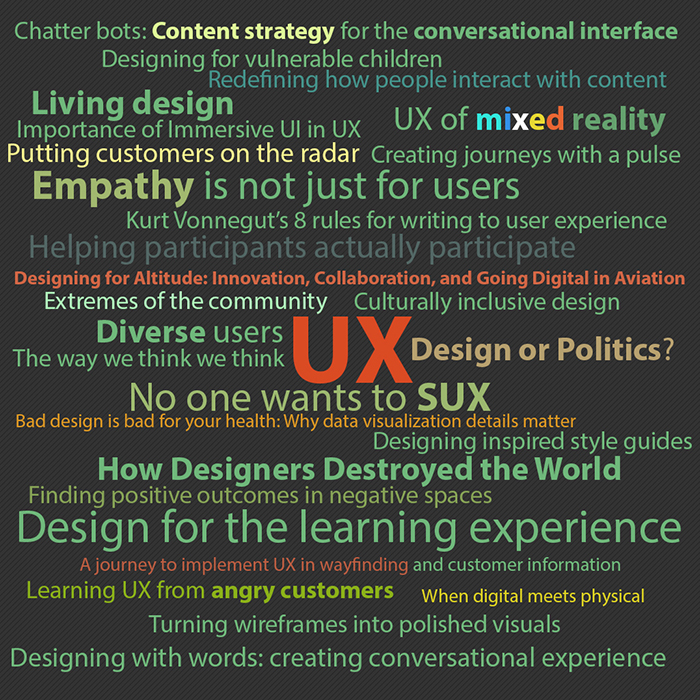
After receiving information about the conference, I immediately began to figure out what I needed to pay attention to in the first place in order to correctly distribute my finances.
And so what happened:
Visa: 500 RM / 150AUD / 120 USD
Biometric data: 121 RM / 37 AUD / 30 USD
Air ticket: 1600 RM / 473 AUD / 375 USD
Accommodation: 1060 RM / 314 AUD / 250 USD
Meals: 150 + AUD / 120 + USD
Conference: (student price) 1200 MYR / 350 AUD / 280 USD
Practical workshop: 2030 MYR / 600 AUD / 480 USD
As a result: you need to count on investments in the amount of 1700 - 2000 USD as a minimum.
Well, better to ask your boss to finance this event.
Let's go back to the main topic of the article. And it is to reveal as many aspects as possible regarding UX design or, in other words, user experience experience. Honestly, I have long been engaged in the study and improvement of my knowledge in the subject of UX / UI , I read articles from various authors and specialists, and began to notice that, finally, it was time for me to start talking about this topic and try to share my accumulated experience and thoughts. A trip to the conference pushed me to a meeting to implement this desire.
It's time to start.
The article is supposed to be quite long, but, I hope, interesting and embracing various fine points, actual problems and aspects.
Voila, Mr. UX
Many people mistakenly think that UX / UI is a new direction that suddenly appeared in the lists of the most popular vacancies in the wake of the development of new IT technologies.
This activity is really gaining momentum now. More and more companies and startups are hiring interface designers and UX designers / developers.
However, no, I’ll reveal a little secret to you, it is not new and existed for a long time, just enough attention was not given to it, and now its interpretation still brings confusion, especially from customers, business / company / product owners, project holders.
Why are there so many alternative definitions around this direction?
And all because UX or user interaction experience is a kind of polyhedron that includes many disciplines at the same time: it is psychology and analysis, focused on studying user behavior; this and information architecture; methods / techniques of research and usability tests aimed at solving a problem and increasing the convenience, ease and friendliness of the process of interaction with a digital / digital product screen or directly with a physical product, space or service; this is the search, research and finding the target user audience; selection and maintenance of participants (respondents) testing; visual design; contextual design; content creation and strategy; graphic design; prototyping (wireframing and prototyping); analytics and building business processes; design and programming; interactive design; compilation of customer journey maps (CJM) of consumer travel maps and further, further into the depths.
From here you understand that it is impossible to be a unique specialist and professional in every discipline. And that on this UX (user interaction experience) work many different experts, working in a team. However, speaking of the profession of UX designer, we mean a person who still has a solid (solid, solid, integral) experience, operating with all the above areas of knowledge, but has profound skills in a particular narrow direction.
And yet, there are still questions:
- Why does the UX absorb so much resources, time and attention?
- How and where did this direction come from, what does it bring to life, what is its use?
- And yet, what is the reason that this term sounded only 5-7 years ago, or even less, having gained popularity with the advent and development of digital technologies and products?
UX in the language of metaphors - my interpretation
Recall the phrase from the cartoon “Great Nehochuha” “Oh, there would be such a country where nothing needed to be done, only to play, and that no grandmothers, only robots”! Or to all the well-known Russian folk tale “At the behest of the pike” .
A person has always sought to simplify the experience of interaction (with someone or with something) in an effort to make as little effort as possible in a given case. And in every fairy tale there is a grain of truth.

The first thing to understand is that the UX revolves around the user and this is his main character , and everything else is the story associated with this hero. In other words, imagine a scene on which we observe our character and everything that happens to him and around him, thereby studying all his characteristics, behaviors, habits, movements, and so on. What does the user interact with and how does he do it and what feelings does he have at the same time, all this should reflect our scene. The reflection of what is happening and will be UX - the studied and accumulated experience .
The goal of UXers is to prepare and create a scene, and the hero seemed to merge with it together so that everything would fit together and he would feel part of the whole picture, easily and naturally merging into it and providing a so-called seamless work process. and interaction with all the elements in it.
It is necessary to understand that it is not easy to design the above described platform, taking into account the needs and situations of all its participants / heroes, especially knowing and knowing that everyone has their own specific goals, requirements and their own vision of what is happening . Nevertheless, the scene should be a kind of union , where different processes and actions take place , but some kind of interconnection can be traced. To meet all needs and organize a smooth, simple, friendly perception takes time and in-depth research. It is necessary to go through a lot of duplicates in order to make sure that the process is built on our stage correctly and without road blocks (interference).
Since I decided to operate in the language of metaphors and draw a certain analogy that facilitates the ability to convey, decipher the experience of user interaction (the so-called UX) in a more interesting form, I can safely say that in the higher text you could also meet and recognize a significant part of the basic terms and concepts related to UX design and which are the main satellites of this direction.
Everything is easy,
A scene is a playground, a laboratory, a chessboard with figures, a reflection of our reality;
Heroes are characters (persons with their motives, goals and actions);
In turn, the Actions and peripetia on the stage are user stores, user journeys (stories of our characters or even a specific list of their successive steps (scenario of possible actions);
The script for the whole picture is a list of flows;
The feeling of smoothness and friendliness of the process itself is the so-called usability and so on.
And UX-er is a kind of director who takes into account all the nuances, imbued with empathy for all the characters.
It is he who shoots as many duplicates as necessary to ensure further selection of the optimal option.
Sampling and cutting of the best duplicates (the result of careful research and analysis) gives an impetus to the creation of an effective and convenient product.
UX chases everywhere! Talk about UX in the context of daily life routine
This chapter is presented for a more complete and deep understanding of the UX as a scientific direction. After all, in terms of this concept, you should understand the whole essence of its meaning, significance and wide application.
UX is not limited only to digital technology and IT.
Very often one has to deal with situations and circumstances in life, in which one feels and understands in one’s own experience mistakes and omissions in the UX. Often, designers do not take into account and do not view all possible options, diversity and heterogeneity of users who will interact with the object (product / service / environment) within the framework of this UX. Many companies do not bother about it at all.
But, as they say, what is the reason, such a consequence! In such situations, I like to use the concept of “SUX” - the SOME User Experience is a UX that does not take into account the full range of users, with their set of circumstances, personal abilities and limitations.
I note that this is quite a serious problem and, by the way, it is often met when user interaction experience is not only not thought out properly even for an ordinary (ordinary) user, but also, as often happens, does not take into account people with disabilities at all. And it is necessary to pronounce it necessary during the design process!
In connection with all this, let's give an example from a rather funny life situation, which, probably, could happen to any person. And it looks like the very day when everything goes wrong with you, and you think that luck has disappeared beyond the horizon, and you, like the hero of the film “Unlucky” with Pierre Richard, are a fiasco at every turn. And all because you are faced with a whole chain of UX, do not take into account the diversity of typical life circumstances for the user.
Evening
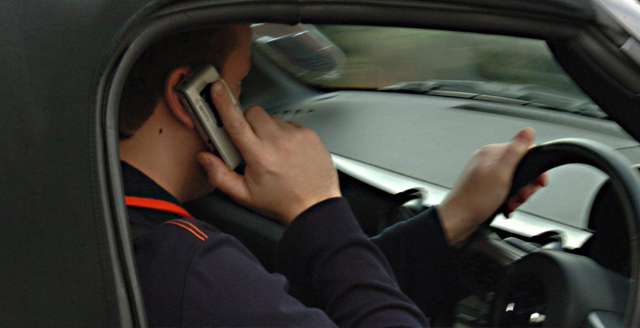
Imagine that your car's battery overnight was discharged, only because in the evening after work, during parking, your child in the back seat distracted attention and said that the next day school was canceled for a specific reason. Since you were late to school because of the situation in the subway (misunderstandings, which I will discuss below), this news has become known only now from the child, and not from the teacher. Well, the reason in general remained hidden “behind seven locks”, since the child was not attentive and the main thing he caught is that tomorrow we don’t need to go to school. Hooray! You, realizing that someone should sit with the child tomorrow, immediately dial the grandmother's phone in order to agree with her quickly. The child at this time loses his phone in the car and turns on the light in the cabin. You do not pay attention, busy talking. The child finds the phone and forgets to turn off the light. A lighting in the cabin is not provided for automatic shutdown after a certain period of time, there is also no sound, giving you to understand that something is not completely off. After a successful parking, you get out of the car, your wife immediately calls and asks you to buy milk and bread. The child distracts and plays around. Before you go out, you turn off the dipped beam and turn the keys, pull them out of the ignition, but as it turned out, do not turn the mechanical element to the end of the headlights, as the switch is not designed to understand that you really turned off position. You turned to the state when the parking lights are shining. Due to the bright light in the parking lot, the light of the dimensions is no longer noticeable. You close the car and run quickly to the store, still talking on the phone. The inner light remained on. Overnight, the battery is dead.
At the end of the working day, after work
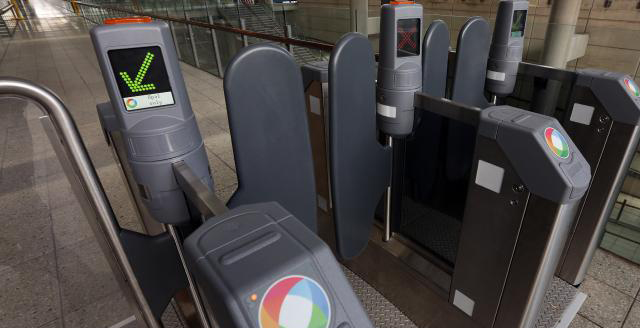
Before you pick up the child from school and get into the car, you had to drive several stations on the subway.
You are used to leaving the car at another station, since from there it is easier to get home and to school without traffic jams.
There is another important point: 2 days ago you flew in from an important business trip and immediately went to the office for a meeting, left your luggage in the office, now it’s time to take it home.
At the metro station there is a special wide turnstile. Usually the attendant is also present nearby. There are people with strollers and large bags. Your case. You know that there is enough money on your travel card, replenished it relatively recently. But bring the card, and the doors do not open and at the same time emit a signal that something does not work. You try again, look at the people passing through the usual turnstile, and you cannot understand what is going wrong.
As often happens, the person on duty is not at the right moment, and you have to go back to the place where everyone buys tickets to make sure that the balance is positive and everything is in order with the card. You lose time, wait in line, get psycho. After all, you are late for a child in school. And having waited for your turn, you are convinced that everything is as it was supposed, a working card, a sufficient budget. You come back, try again. Already go to the stage of despair, and here you see the attendant, who also notices your displeasure over the expression of the face. He explains what you are doing wrong and finds a solution to the problem very quickly, it turns out you need to hold the card a little longer than the ordinary turnstile - more than 5 seconds. Unfortunately, this information does not appear anywhere for the lack of thoughtful UX. And this is a fact.
At work
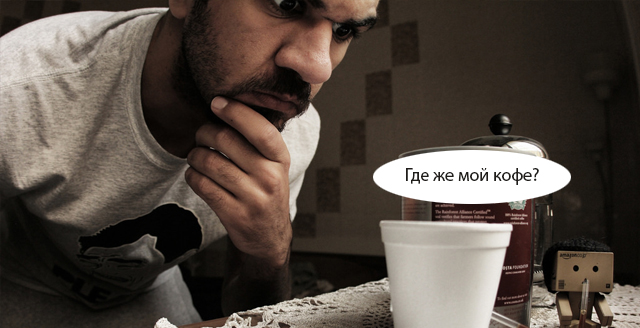
At work, from the very morning, you have everything arranged, meeting after meeting. Very important day. Planning for next month. You were late and did not have breakfast at home. There are very short breaks between meetings, and in the meantime you are dreaming about a cup of hot and evocative coffee. Literally rush to the coffee machine after the first meeting. Press the button, select the desired drink from the list of coffee cards (hoping that the filled cup will be waiting for you) and run to the toilet.
Afterwards, the director meets you in the corridor and is interested in hearing your opinion on a specific issue. You communicate, but inside you think about the cup of coffee that is waiting for you. The conversation ends, you are happy and run to the desired. But you get upset because everything stopped at the place where you started it all. Here another person approaches the machine, and you already look at him as a competitor, but he is only trying to explain that you did not press the button to the end and for this reason you were left without a long-awaited drink. There is no signal or indicator lights indicating that the coffee machine has started.
The lack of competent UX.
Morning

And here we come to the very initial link in the whole chain of events. You overslept. Alarm clock did not work on time. You turn off your smartphone while you sleep and put it away from you at night, consider it more harmless. You are using an ordinary electronic clock - alarm clock. This time it did not work, because the time had gone astray. And the time got lost due to the fault of your pet, who managed to walk through these hours during your sleep and reset the timer. The clock you left on the floor, next to your bed. If the interface of this clock would have been worked out a little differently, the button layout would have a different configuration, perhaps this would not have happened.
A rather ridiculous set of circumstances, but giving a more complete picture of how the UX can be embedded in our daily life and spoil or improve our mood.
Examples can be cited endlessly, and I’m sure that each of us is dealing with user experience experiences day by day.
I recently spent a lot of time to find myself a full-size headphones with active noise cancellation, lightweight and ergonomic, visually pleasing and design interesting in appearance, with a touchpad, a good output frequency, a microphone, etc. There was a whole list of requirements. My search was quite long, I was already disappointed in the range that is offered on the market. But it was still a success, and now, pleased with the result of my search, I enjoy the choice ... ...
I hope that you are still here with me and are not tired of meticulous examples, after all, UX pros should be thoughtful and detailed.
A tour of UX history. Disperse the fog
As you can see, UX is a user experience, gained from day to day, it continues to evolve with the person and has a fairly rich history. Just think about the time when the first so-called steam - powered cars began to appear, when the history of the first car began.
We can recall Dmitri Mendeleev’s proposal, dated as early as 1863, when he proposed to deliver oil from oil production sites to the seaport at the Baku oil fields not in barrels, but through pipes. These are the first ideas of pipeline transport . Mendeleev’s proposal was not accepted, and two years later, the first pipeline was built by the Americans in Pennsylvania. As always, when something is done abroad, they start doing it in Russia. Or at least allocate money. As a result, in 1878 Shukhov built the first oil pipeline in Russia, proving the convenience and practicality of pipeline transportation.
You can go deeper even earlier and remember the story of the “Kitchen Nightmare” by Leonardo da Vinci, 1430 . Maybe someone now finds out about this for the first time. But this is a very interesting and informative fact. There is a book called “Think like Leonardo da Vinci” and it tells the story of the Duke of Milan, for whom da Vinci designed the kitchen for high-profile grand holidays.
This famous in history, the so-called “universal man” took up the work and developed conveyor belts for transporting food to the cooks . This case is considered the first example of the use of technology (hundreds of years before the industrial revolution).
However, here we can trace the first echoes of the modern problem of designing and searching for the best, optimal experience of interaction with various systems friendly to people who directly need them.
With the advent of the industrial revolution, interest was attracted by research aimed at the development of production tools for more efficient use of them in enterprises. And in 1857, Wojciech Jastrzembowski coined such a term in science as“Ergonomics” . At the same time, other scientists have studied how people think, how the process of cognition takes place, and what motivates people.
Wilhelm Wundt founded the first psychology laboratory in 1879.
Do you know about the project idea of Henry Dreyfus for people in 1955?
Henry Dreyfus , American industrial designer, wrote the classic text “Designing for People”. In it, he writes: when the points of contact between the product and people become friction points, this means that the design tasks have failed. On the other hand, if people’s lives become safer, more comfortable, more efficient, or just happier when they come into contact with the product, the designer will succeed. The significance of these principles has now become even more relevant in terms of the quality of points of interaction between the product and the person.
Of course, that time, history and a rich scientific base laid the foundation for the formation of the deep roots of a new and serious field of research, but it was still far from the birth of the very direction and the description of the methods with which it operates.
Indeed, it was only in the 1990s that Don Norman popularized the term “user experience”.While working at Apple, companies like Xerox have done official research on computer and human interaction. And in 1995, Jacob Nielsen wrote his famous 10 practical rules of usability , which everyone still uses today.
I am sure that I managed to convey to you the main idea that UX as a direction was not formed suddenly and from “nowhere”. It has a proven deep scientific history, and the knowledge and methods of UX come from centuries-old scientific and applied research and practice.
Methods, approaches and basic principles in research - UX design
Research on user experience is aimed at attentively studying user needs and consists in a systematic, regular approach, analysis and evaluation of user behavior, which in turn leads to the creation of a more convenient, useful and popular product oriented to their needs.
Any research makes sense if it is:
- true / justified / materially
- reliably
- productively
Reasonableresearch is, if you really measure and analyze the data that corresponds to your initial assumption, opinion, requirements and are directly related to the object of study. That is, you define what you think you define. In this case, we can hope for a true and effective result of research work.
Reliable , if the data obtained as a result of research, are consistently consistent, not contradicting each other over time from the beginning of the experiment and supported by worthy practical examples.
Productive, if a specialist can easily operate with the results obtained in the course of research, as well as make fairly firm and clear decisions with confidence, knowing that this will lead to success and expected goals.
Let's look at the image below: Let's
distribute the plane into 4 areas and determine the effectiveness of each study by evaluating two main characteristics: reliability and validity (truth) .
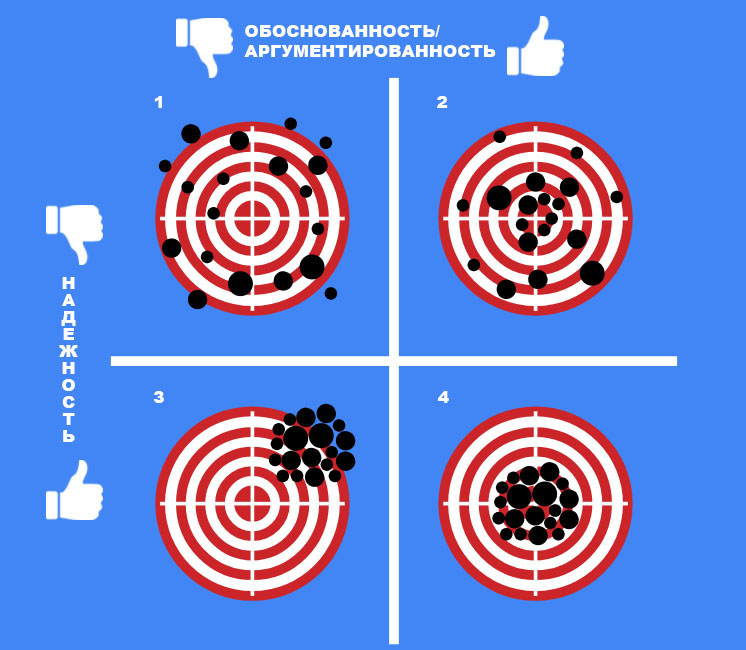
Chart 1: You can note a clear discrepancy and inconsistency in the collection of data. Each time the values differ and do not match. It is impossible to draw an unambiguous conclusion or conclusion from the results obtained.
Chart 2:There is still a lot of randomness, but a gradual collection of results in the main center is already beginning to emerge. The collection and measurement of data goes in the right direction, but still there is not even an 80% probability as the characteristics taken as the basis for the study. The sample is not entirely accurate, so there is no required consistency in the values according to the result of the experiment.
Chart 3:A very interesting case in which we observe a concentration of values almost at one point. That is, there is a probability of reliability of the study with the consistency of the obtained values, but the collection point does not correspond to the center (our original goal was not achieved), which means there is an error in the selection of measured data taken as the basis for this observation. This suggests that the research method was chosen correctly, but that key factor (data), which carries (s) a direct impact on the object under study, has not yet been found in the originally requested context. The result is true, but it corresponds to other tasks and goals.
Graph 4: 100% probability of success in the approach to the study, a suitable research method was chosen and the correct data were taken during the measurements.
Of course, we are all well aware that not all companies are truly ready for serious investments and time spent on conducting high-quality research on designing user interaction experience. Everywhere all has deadlines. And research is a long process, there is always a place for new discoveries, assumptions, innovations and improvements before existing ones. Even in the most advanced companies, there is not always enough time for long-term research work. However, I can also notice a big positive jump in this direction lately. There is a growing desire among entrepreneurs and business owners to develop the product in a uniform pace and strategic order, instead of quick and rash jumps "at random" with their own amount of trial and error. And it pleases. That is why the UX platform is gaining more and more attention and opens up new topics for discussion, bringing up a good tone in the development and development of new popular products and technologies.
We investigate properly!
Now, I will try to describe what the process of conducting the study is and make a specific list of steps towards an effective result.
1. Setting goals and research questions
At this stage, it is advisable to establish the main tasks as early as possible and discuss the existing problems with all project holders (stakeholders).
Outline the problem: What is the essence of the problem, what should I look for?
Stakeholders: Who is the research investor, people involved in the process?
Main goal: We speak out the objectives and goals of the research, we set priorities.
We form questions: We make a list of current issues. What specific questions should be answered during the study?
Business intentions and anticipated exhaust from the study: How will the data obtained in the course of the study affect the business? What is the use?
Example 1:
— ?
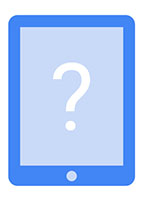
:
- ?
- ?
- , ?
Example 2:
— Google Drive?

:
- , ?
- / ?
- ?
- ?
- , ?
Pay attention to the types of issues related to usability / usability:
If the task is to find out how convenient a particular product, its practicality and user characteristics, then refer to the list of specific questions.
These questions are universal in nature, their main task is to consider the user's reaction when interacting with the product and identify its weaknesses, eliminate shortcomings. After all, ease of use allows you to speed up user interaction with the product and save valuable time.
Consider these questions (to the user) more closely:
- Do they even understand how it works? [Perception and understanding of the product / service / environment]
- Can they find it, what is the probability? [Awareness, evidence of an element of the product]
- Will they operate with this (element, function), how obvious, how can they use it? [Performance of the task]
- How do they like it, are they satisfied, satisfied are all the motives? [User satisfaction, feeling after interacting with the product]
- How useful is this user loyalty ? [Usefulness, practicality, need and need to use]
Just another example and move on.
Example 2:
Objective - To determine the methods of movement of people in the vicinity of the city of Krasnoyarsk and to install which devices / tools / applications are used most often?

The list of questions to the study of logistics movement in the city of Krasnoyarsk (my hometown):
- What difficulties do people have when traveling around the city?
- What works or does not work (which function really helps, and which does not represent need, is not in demand) in those or other digital products / applications / services, most often used as aids when navigating in the city?
- What obstacles can occur on the way? How do factors such as accessibility, reliability, time savings, price, crowds, and others affect the outcome of the move?
2. A detailed study of the area to which our study is directed. An overview of past current developments in the same direction
This step includes the following steps:
- /,
- ,
- , , , , , . , , , .. ( — : Gartner, Pew Internet, Statista, Gfk, Business Insider)
:
65+, $13 000 ( $1000 ) iphone 7, 45+, $20 000 . , , - , .
- Literature review. Search for information from the texts of scientific publications, libraries, print publications of all formats (Google Scholar). For example, the Google Scholar resource searches not only for articles that are available online, but also for articles that are only available in libraries or for money. “Scientific” search results are generated using links from “full-text journal articles, technical reports, preprints, dissertations, books and other documents, including selected web pages that are considered scientific.
Let us return to the issue of using tablet devices, below is a graph of the research that has already been done in this area, which makes it possible to examine the use of one or another device during the day and see the lengths of working with them.
Available developments can be a good information base in the course of a new study:
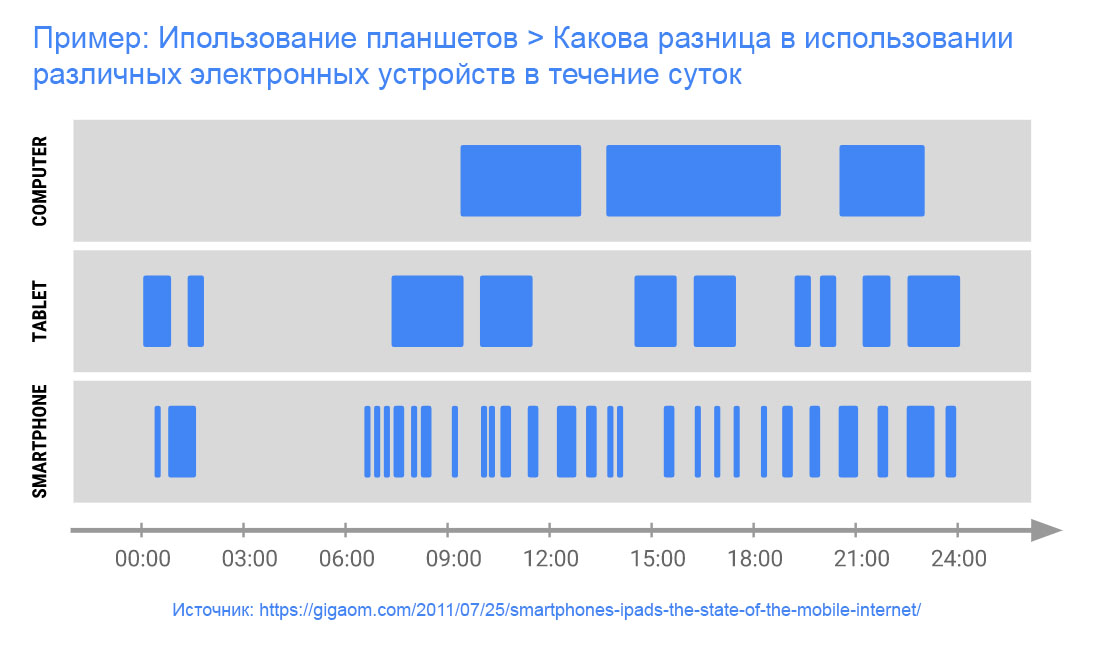
Always rely on the scientific experience and knowledge that has already been held before you.
Determine the relevance of previous studies, the effectiveness at this point in time and act!
3. Choosing the right research method (s)
There are 3 main aspects that you need to pay attention to when choosing the most optimal approach to the research process:
- At what stage of implementation is the project / product currently?
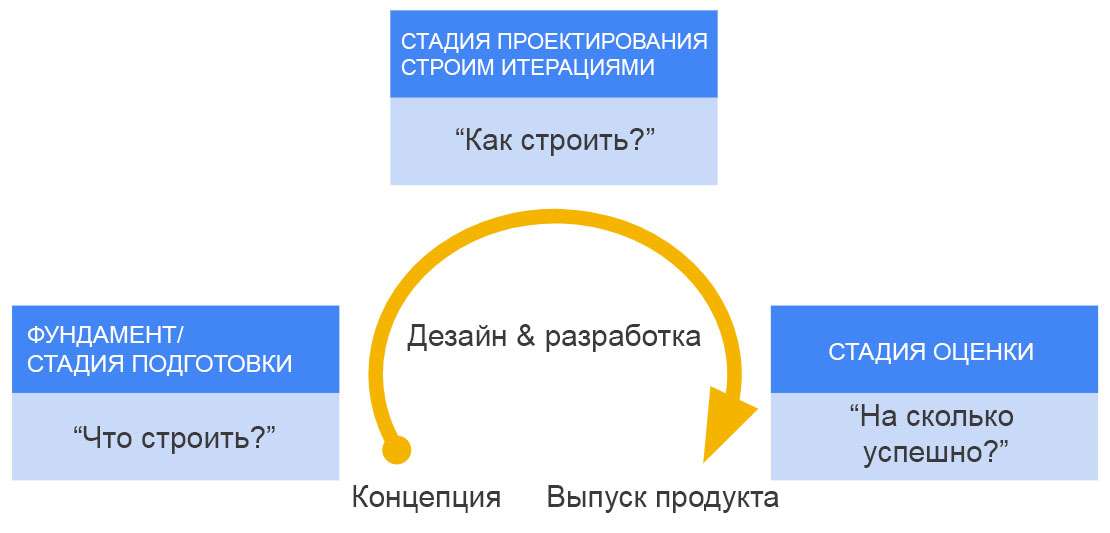
- How accurate should the results of the study be, what resources should be available during the experiment? (Financial, technical, personnel, temporary ....)

- What specific questions need to be answered upon completion of the experiment? And what method to use in this or that question?

We spread the methods on the plane!
The task of the designer is to select the research methods that are best suited for the project.
There are a huge number of research methods that are successfully used in practice, which is why it is usually difficult for novice designers, usability workers and researchers of user experience to grasp the difference and find out in which conditions it is better to use one or the other.
When you read about each method for the first time, you grasp the meaning separately, but you still do not get a proper understanding and complete understanding of their organization, you have no idea how to combine, mix up several methodologies in one study, do not look ahead to all the pros and cons, approaches, optimal implementation conditions. It seems that any method is good, each has a grain of truth, each also has its advantages and disadvantages.
It is for easier perception and visualization that you want to put all the existing research methods on the plane, on it all the methods find their “place under the sun” and UXer becomes much easier to operate with them in a given situation, under certain circumstances.
Before putting all the methods on the plane, let's consider the existing global forms / types of methodologies, we will see by what criteria they are divided into categories.
Methodology preferences / attitudes and behavioral methodology in UX research

Quantitative and Qualitative Methodologies in UX Research
Quantitative research aims to interview as many respondents as possible and get a numerical result.
Qualitative methods are aimed at understanding the motives of behavior and the logic of users.
Here you will not take quantity, you need an individual approach.

It's time to get acquainted with the rich variety of existing usability methods and scatter different methods on the plane.
Since I used to operate more with English abbreviations, but now I work for a Russian audience, I will present the plane in two versions, with English and Russian method names.
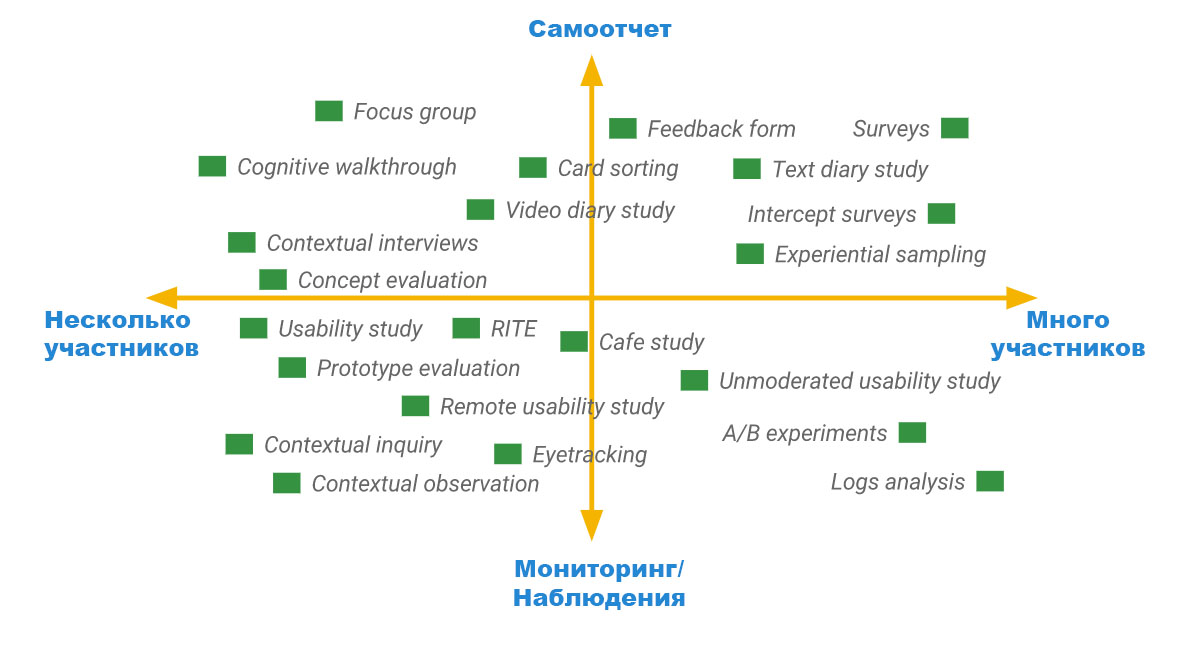
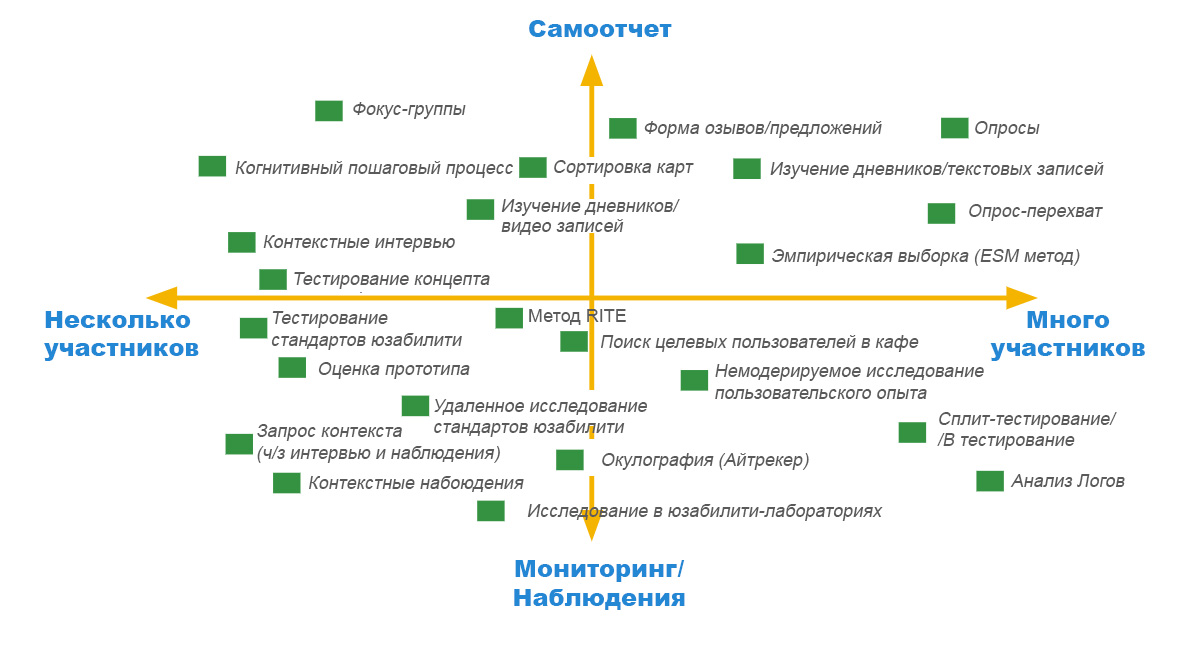
Before giving a detailed description of each of the methods above, I will combine them into groups ...
- Group: Contextual interview and observation
- Group: Understanding and tracking the process of use
- Group: Usability (usability) and concept assessment
- Group: Measuring perceptions and attitudes (cognitive research)
Casket with research methods (let's talk in detail)
- Contextual interview and observation
- Contextual interview

This is a very effective way of obtaining information from the client, since he does not know about the fact of the survey (survey) and, being in a natural situation (in the ideal case) receiving the service or after it (for example, during the calculation of goods / services, during the fitting, during the procedure or filling out the documents) is ready to answer questions openly.
However, it is also possible to make an appointment with the user in advance and time to interview him, regardless of the situation and circumstances. In this case, you need to prepare a list of questions and determine what critical data you need to request from the user (information about the device, clear answers to specific / highly specialized questions), also consider in what form to collect them (notes, video / audio, photos) during conducting an interview. - Contextual observation / monitoring of the behavior and actions of potential users, in an informal setting, I like to call this method (“close up as a granny on a bench”)

This method is based on the observation (without communication with the object of study) of certain events / actions or behavior associated with a particular person or group of people. Data can be collected using structured (preliminary definition of user behavior / reaction and subsequent verification during observation) or unstructured (recording behavior / actions / manners as they arise / reveal), in addition to other methods. - Phenomenological method or Request a full context (c / o interviews and observations)

Phenomenological research combines several methods, such as conducting an interview, reading documents, watching a video, or visiting some events. To understand the motivation, you rely on the participants' own views.
This is basically an attempt to combine the two processes - observation and interview. We observe what the user is doing, ask him to comment on his actions, ask clarifying questions and with him describe in his daily routine as much as possible. So the method is implemented in practice. Data can be accumulated in different ways and in different formats (audio and video recordings, notes, photos, information provided by the participant in the experiment).
- Contextual interview
- Understanding and tracking usage
- Keeping notes / diaries / text entries
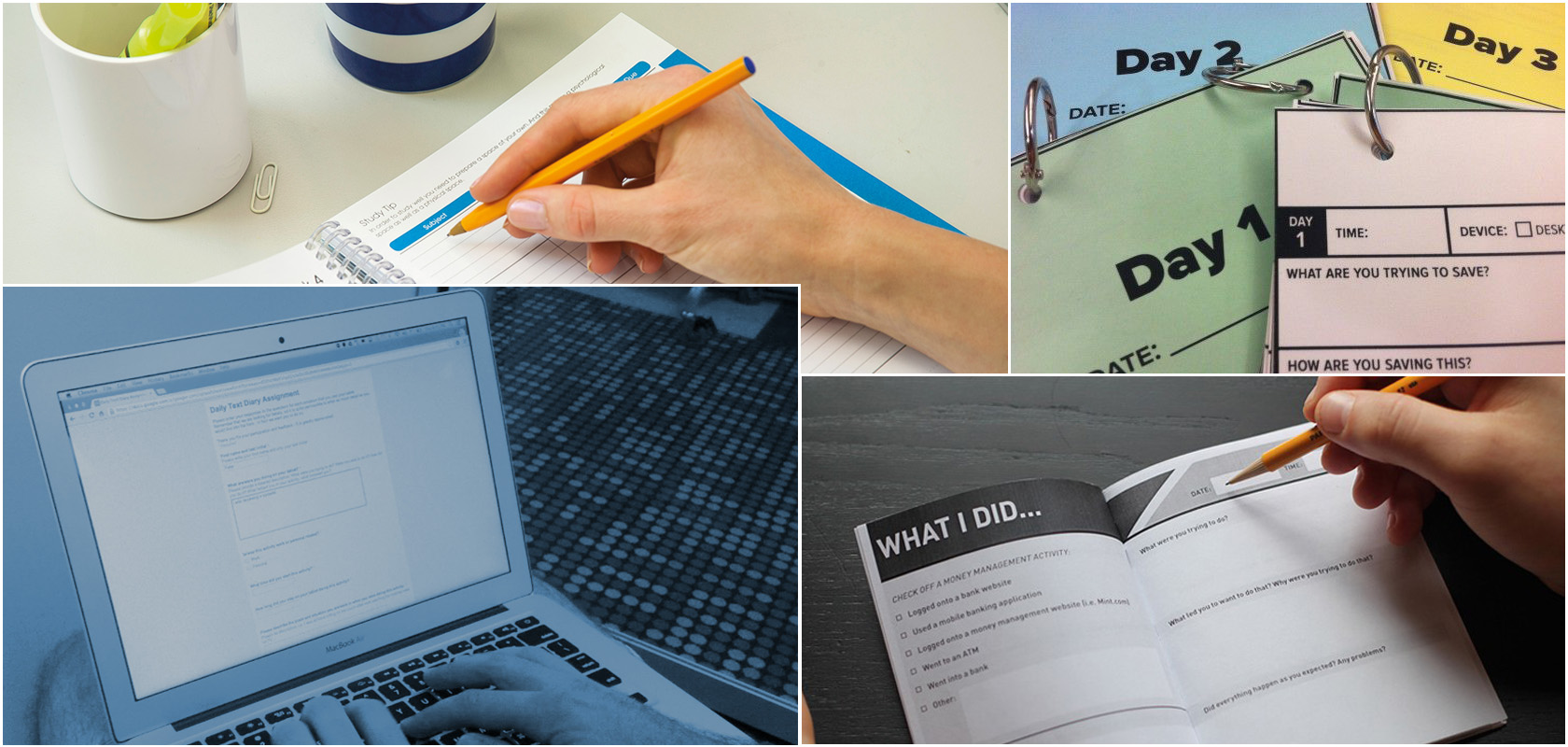
The subjects are given a tool (diary / notebook) for recording and describing aspects of their life that are either relevant to the product / resource, or are common to the majority of its target audience. Recording and taking notes is usually carried out at certain intervals. A good way to collect behavioral data.
Diaries are usually used for long-term research and are suitable for collecting only the information that respondents can provide without difficulty. - Diaries / photo report

It is very similar to the above method, but in this embodiment, the emphasis is on visual information, pictures, photos. - Diaries / video report

Very similar to the maintenance of text and photo reports, but in this embodiment, the emphasis is on video recording. The great advantage of this method is the fact that it allows you to collect quantitative data from users at a remote distance. Participants can easily record on video all the answers to their questions, it is easier to collect information about user behavior and the use of this or that device. - Empirical sampling (ESM)

While keeping diaries and records forces the user to address and describe a particular event / action that occurred in the past, the ESM method stops the participant at a predetermined period of time (during use of the application, during arrival at the destination, after registration on the site, etc.). - Automatic saving and analysis of logs, computer programming

In this method, information is obtained by processing / analyzing logs (text format files or database tables, which contain all the necessary data about all user actions).
The data in the log file is a rather incomprehensible information for an unprepared beginner, but for system administrators it is quite understandable and meaningful text, which can serve as a basis for carrying out any actions, research or even criminal prosecution of the client (of course, in the case of unlawful act, for example, hacker hacking, resulting in the removal from the server of the database stored there with the data of bank cards of customers of the company).
But when analyzing event log files (log files), system and network administrators should take into account that the data obtained is still not 100% real, the deviation in them is usually 5-10% due to various technical and technological features of the equipment used and its settings.
To receive summary reports and statistics on log files, special software is used, which is called “Log File Analyzers”.
- Keeping notes / diaries / text entries
- Usability (usability) and concept assessment
- Heuristic Methodology / Expert Evaluation
This method does not focus on the attitude to the product from the point of view of end users. Here, more work is aimed at a thorough analysis of the product (competitor) in order to find and identify its strengths and weaknesses, weak and strong aspects, based on the principles of interaction design as guidelines. Competitive reviews can also give a good idea of the existing functional characteristics and capabilities.
Recall the definition of the term "Heuristics". Under the heuristics understand the set of techniques and methods that facilitate and simplify the solution of cognitive, constructive, practical problems. Heuristics is connected with psychology, physiology of human higher nervous activity, cybernetics. As a science, heuristics develop at the intersection of philosophy, psychology, the theory of "the arts, the intellect", structural linguistics, information theory, mathematics and physics.
Here we also give 10 Jacob Nielsen heuristics (you can read them in more detail later):
- System awareness
- Similarity of the system with the real world
- The freedom of action
- Uniformity and standards
- Preventing mistakes
- In sight, not in memory
- Flexibility and efficiency
- Aesthetic and minimalistic design
- Understanding of problems and their solution
- Reference materials and documentation - Cognitive step by step research process
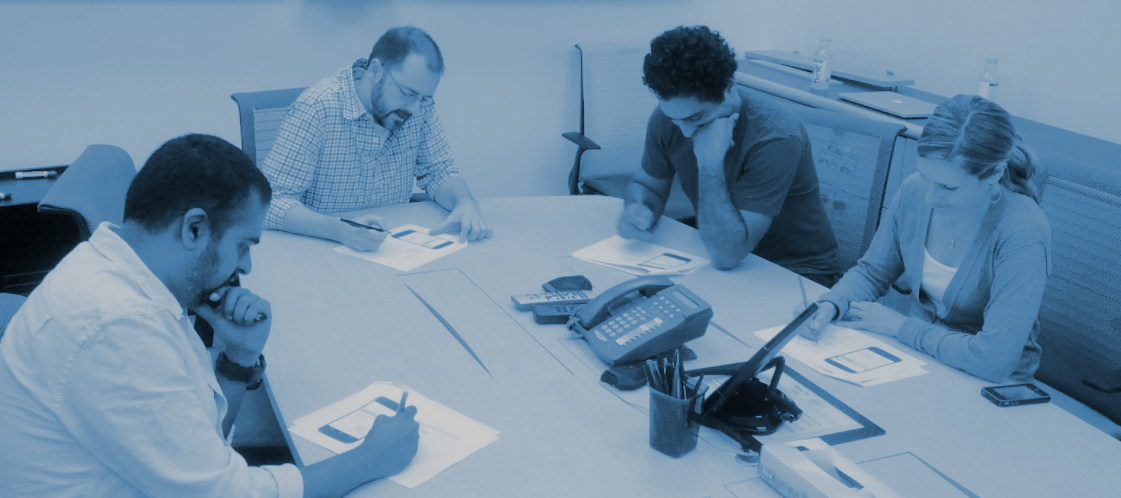
Cognitive walkthrough research is a quick way to get feedback and initial impressions about user interfaces and the correctness of their navigation flow directly from experts in the field of study. - Concept testing
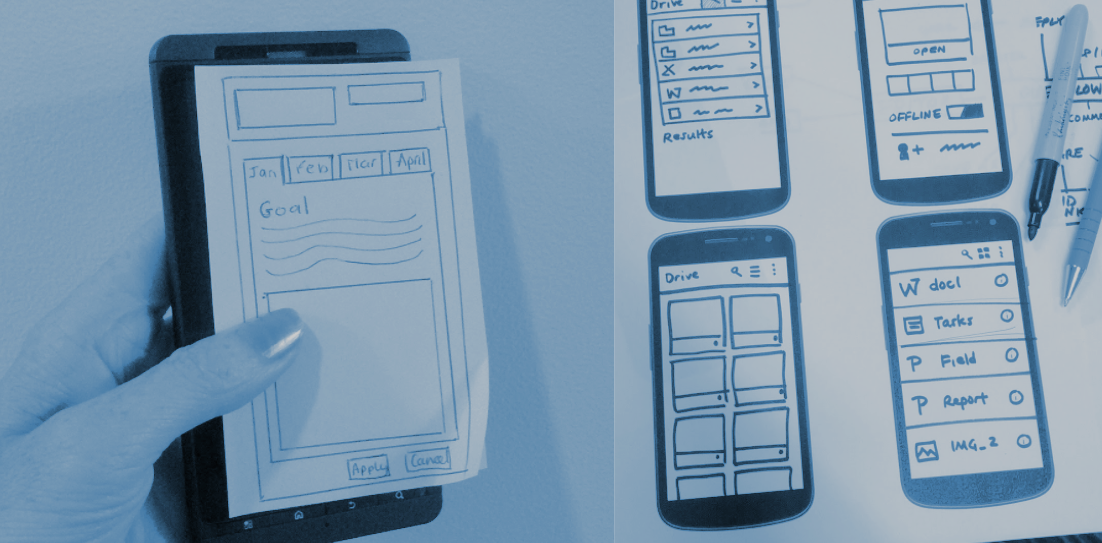
This is a method in which the focus is on conducting conceptual tests with a selected number of participants to determine whether the concept meets the needs of the user or is a solution to a problem. This method allows you to check and make sure that the user perceives the navigation flow (real navigation through the product in the process of testing user scenarios), as well as to ensure the sequence of actions taken in the way of solving the set tasks, the correct communication of the main goals and intentions, an effective approach to building and information architecture strategies. - Prototyping with iterations followed by evaluation
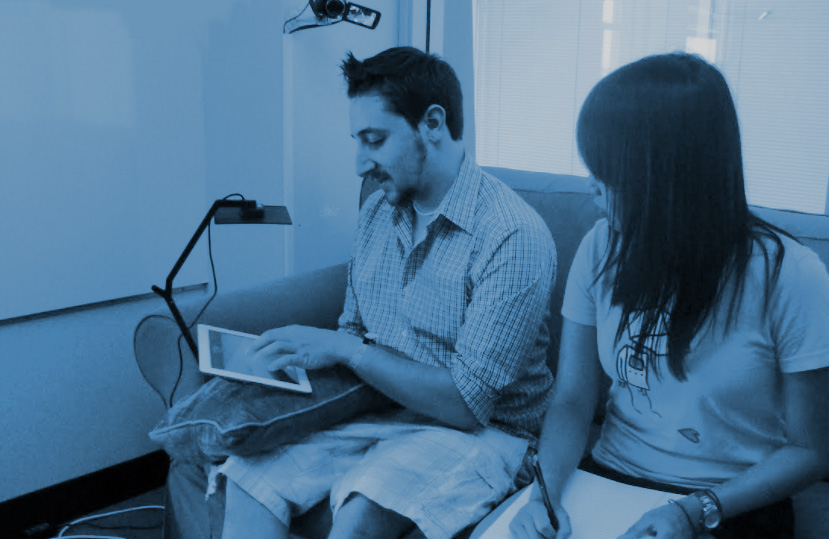
The design method begins with the design of rough prototypes or low-definition prototypes (a set of sketches on pieces of paper). Rough prototypes are used in the early stages of design to collect the initial feedback from participants and correctly determine the design flows.
High-definition prototypes, with good detail, are usually evaluated at later design stages to test all levels of interaction and bring the prototype to the “final product”, then the final testing of all user interactions with the object takes place. - Guerrilla testing / UX-special forces

Typically, this method is most often carried out in a cafe with a gradual catch of interview participants. Therefore, it is also called "partisan research in the cafe." Participants, however, are on the fly (bar, public transport). This helps to get a more fair assessment without the respondent’s training effect, that is, we see a real reaction to the product in an unprepared situation. The process usually takes no more than 10 minutes per participant, and the cost of holding does not go beyond.
Guerrilla research is a kind of non-lethal form of guerrilla tactics. As you know, in the guerrilla war, small mobile forces are fighting the enemy, using the tactics of ambush and fleeting fights. Who in this case is considered an "enemy", you ask? Probably the main enemies of your team will be time, money and resources; if you run out of something, it may turn out that you have created an innovative, but non-viable digital product. For customers who do not have the time or budget, traditional user research (for example, ethnographic) takes too much time, and usability testing simply cannot show how well the proposed value matches the audience or whether key aspects of the interaction provide value innovation. This is where guerilla user research comes to the rescue — this economical and mobile tactic should help to quickly get answers to necessary questions. - Research in usability laboratories
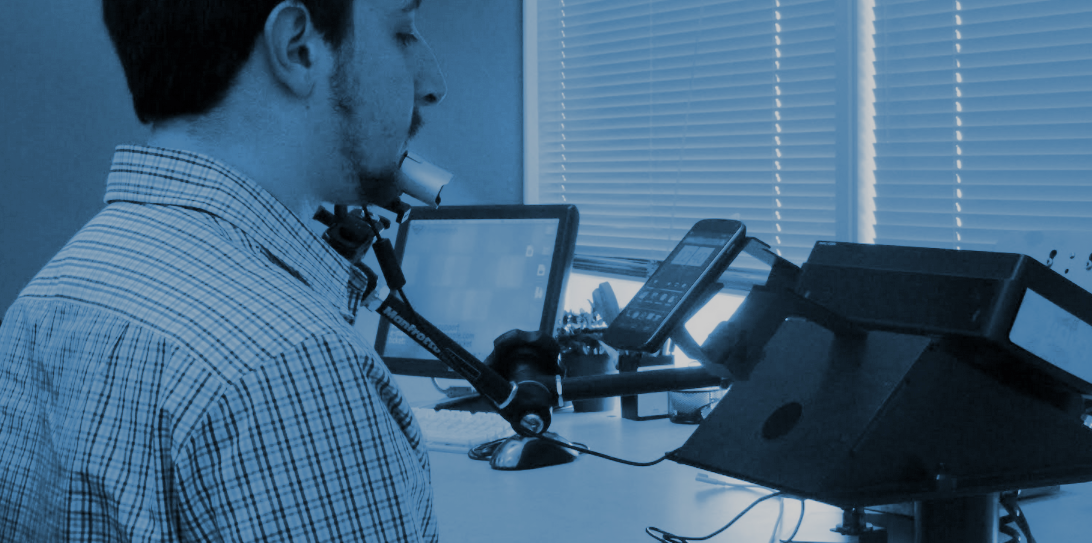
Each of the group of respondents, individually or directly in a team, meets with a researcher in a special laboratory, where he performs a series of tasks on using the product / service, following a specific scenario. Most often, participants are given the opportunity to work and test the prototype. The advantage is that this method allows the test manager to establish and organize space / space. in a way that is necessary for a more effective result. This includes installation of video surveillance, audio recording, etc. - Remote research

A remote usability study conducted using screen sharing and device co-management software. - Unmoderated user experience survey

A group of trained users (panel), on the devices of which programs for video recording and data collection are installed, voice their thoughts in the process of using the object of study. The researcher either analyzes the information received from the respondents, or coordinates their actions. Venue in any convenient place. - Field research or research in a real environment, in natural conditions, corresponding to the subject of study

Studies are conducted in a familiar environment for respondents - in places where the test object is likely to be used. - Split tests / AB
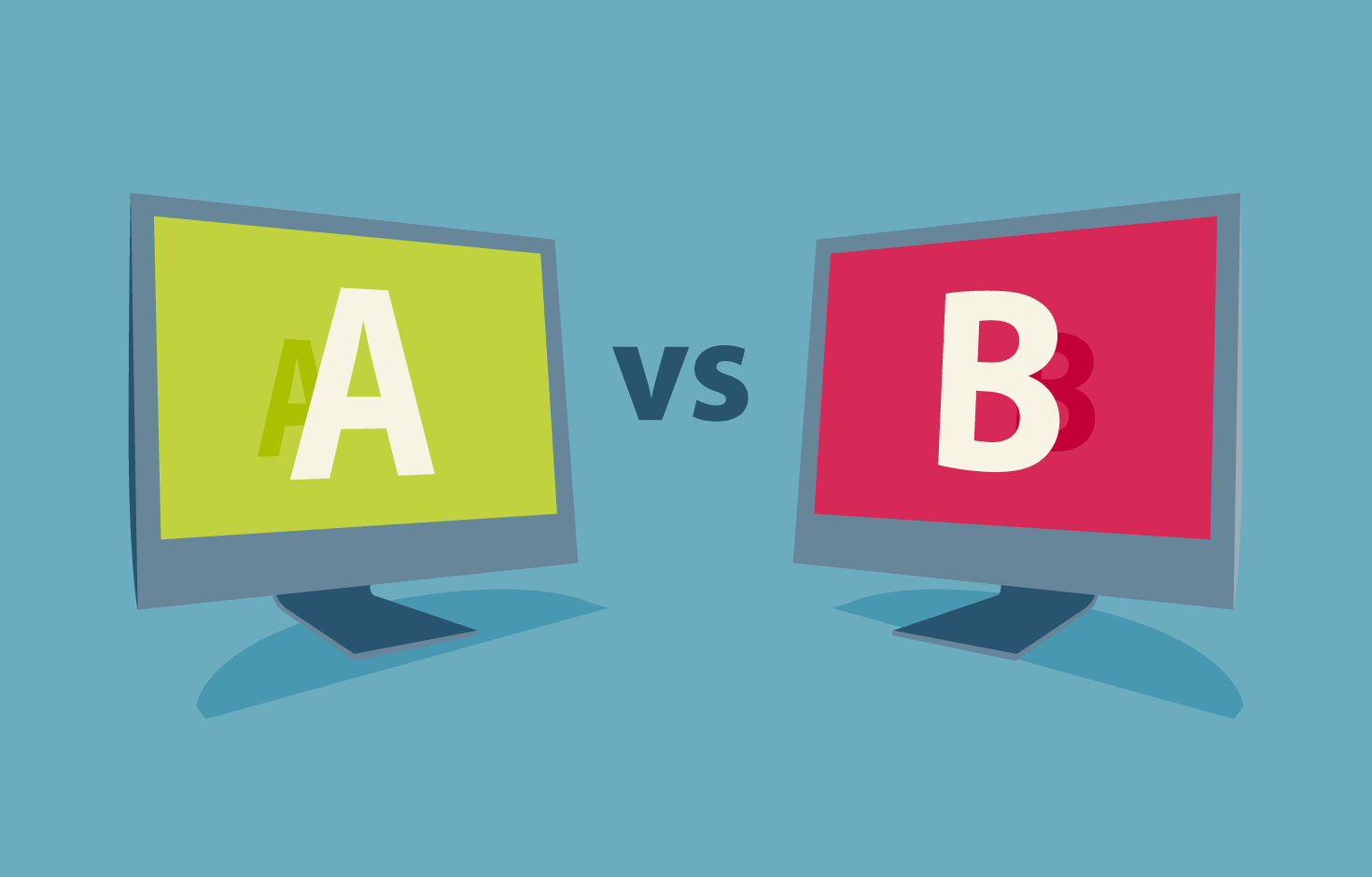
The study of the effectiveness of various design options that differ from each other by one parameter, based on an analysis of their impact on the behavior of random user groups.
- Heuristic Methodology / Expert Evaluation
- Measurement of perception and attitude to an object / product / device
- Focus groups

A group of 3-12 respondents expresses their opinions on a number of specific topics after completing assignments or in the process of discussion. - Polls
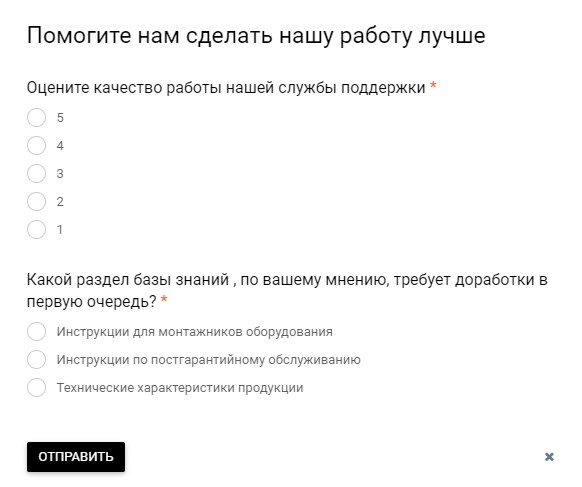
Users are invited to take a survey in the process of interaction with the resource.
Participants respond to specially prepared questions. Surveys, as a rule, help to get an idea about the attitude of the user to the resource, awareness of its existence, demographic statistics, less affecting the behavioral side of the user. - Log Analysis
We have already become familiar with this method above, since it also appears in another group for tracking the process of using the product. With this approach, it is possible to monitor and control how quickly and easily the user grows together with the product and its outer shell.
- Focus groups
- Deep immersion in the study area
, , , , , . . , , , , , .
Let's wrap it up
So we went over the basic research methodologies and approaches aimed at creating a smoother, more user friendly experience when interacting with the product.
However, I want to note that there are many more methods and all of them initially follow from such sciences as psychology, sociology and others that study a person and his behavioral characteristics.
Knowing how to operate with each method separately and combining them, if necessary, makes it more likely to achieve the best result.
4. Selection and recruitment of test participants
One of the main criteria for successful testing is competent selection of participants (respondents for UX-research). Since the validity of usability testing results depends on the correct selection of participants. By testing the product with its real users, we sort of identify problems when interacting with it.
You need to have a good understanding of the target audience of the research subject.
Each subject must represent one or another group of users (subset).
It is very important to take into account diversity according to the following criteria, such as experience, preferences, level of computer literacy and "advancement" in IT technologies, interaction patterns, demographics of the audience, etc ...
After all, different users can operate with the product, each has his own vision, goal, problem. Therefore, the more accurate the sample of respondents, the more “mixed” candidates you find, the higher the likelihood that meeting the needs of one representative of each target group will be a reflection of the entire subset.
Selection takes place through a survey, a scenario for collecting data on candidates and selecting the appropriate requirements.
Be ready to show your creativity. Use empathy skills to imagine yourself in the place of target users: where to look for them and what can make them take part in testing?
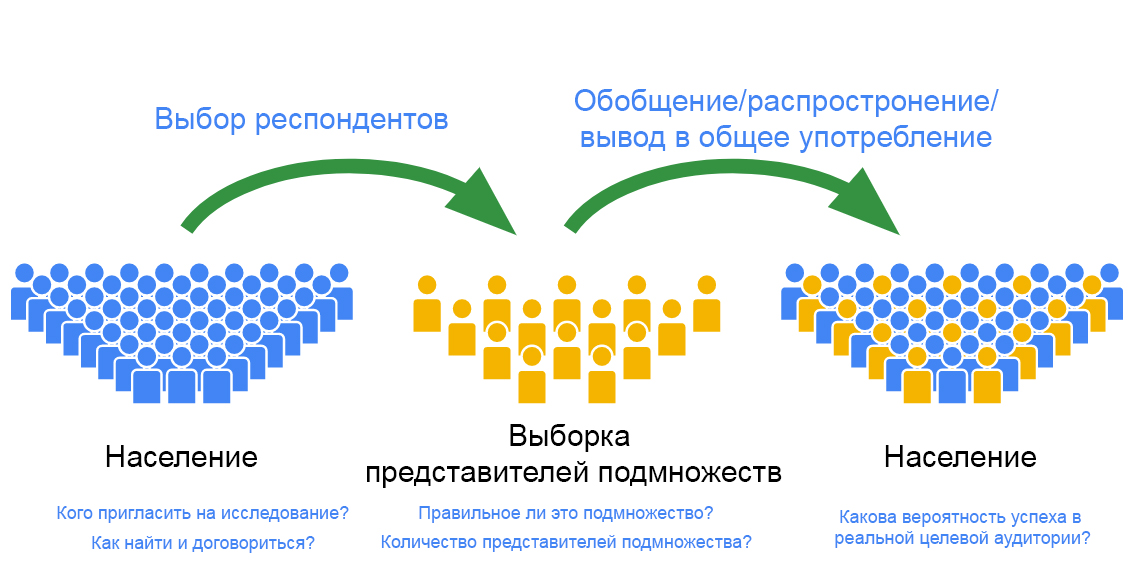
5. Conduct research, data collection and analysis of the result, followed by the conclusion
At this point, I would like to give certain recommendations and just make a conclusion.
As you lead the research process, think about how to maintain the interconnection of participants during testing. Motivate the subjects, keep in touch with them if necessary. In cases of keeping diary records / photo / video reports (diary studies), try to send out permanent text reminders. Do not forget about the form of remuneration for participation in testing.
Data collection depends on which method you used. It can be a combination of dictation notes, table records, photos, video records. In the case of another methodology in which the user must enter data from an electronic device (surveys, reports), provide a convenient form of a survey or diary, it should not be boring and infinitely long. Let the participant break up the filling process into several stages, take a break and use autosave. Try to think through the process of data analysis and their subsequent comparison, comparison, plan the processing of the results in advance, collect data in the correct order, organize proper storage of the information received.
Do not forget that even though you have done an enormous amount of work, you should not stop at what has been accomplished, continue to collect recommendations, think over the following steps, answer the questions you have posed, visualize the results in an easily accessible form.
Try not to conduct research alone, invite at least 2 observers / assistants and train them.
Recheck everything several times (equipment, addresses, materials, etc.).
Be prepared for unforeseen conditions and circumstances (animals in the interview room, uncleaned rooms, no lunch and other difficulties and inconveniences).
You should always be open and flexible to the rapid turn of events. Memorize, observe, write down and photograph everything that is possible. Evaluate and discuss on the spot.
And finally, a couple of tips on how to properly communicate with the participants of the experiment ...
The art of interviewing how to ask questions
During the conversation with the candidate:
- Avoid questions that show your superiority over the participant. They lead to the stiffness and closure of the interviewee.
- Try not only to listen, but also to watch.
- Do not use prof. UI / UX vocabulary
- Let the subject think about the question, do not squeeze in time
- Do not help imposing your point of view.
- Ask the respondent to think out loud, this will show his thinking logic.
Thank you all for taking the time to my review, I hope everyone found something useful for himself in the article.
And now a short and funny cartoon on the subject of conducting a “patient” relationship during the testing of a research participant.
See you all soon!
Source: https://habr.com/ru/post/338996/
All Articles
